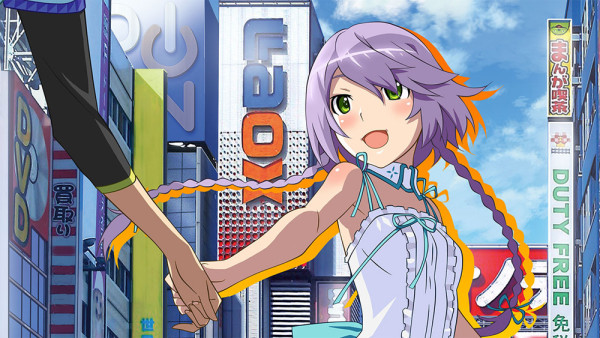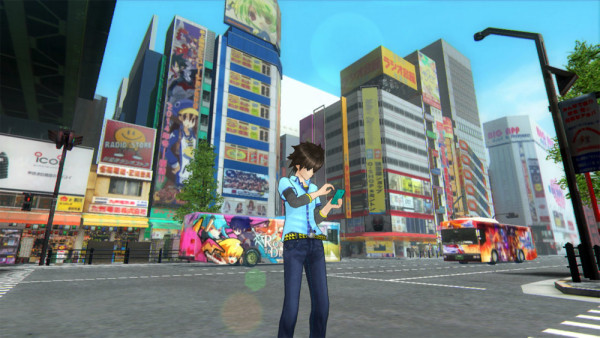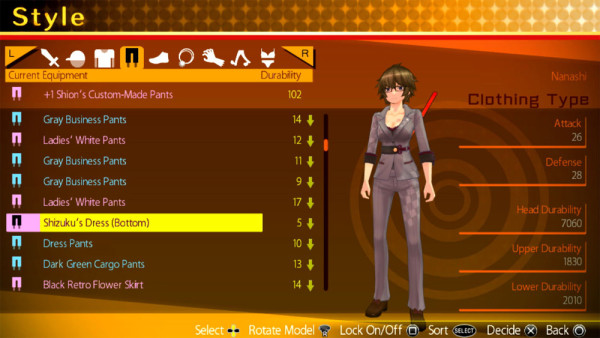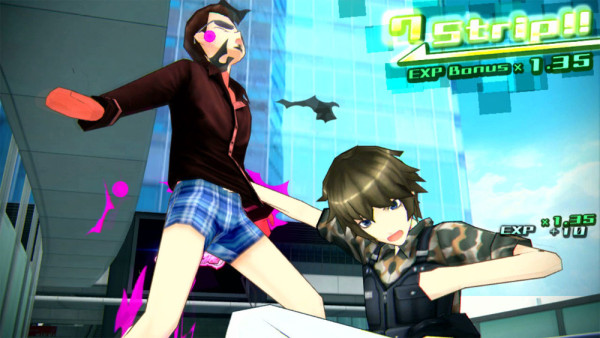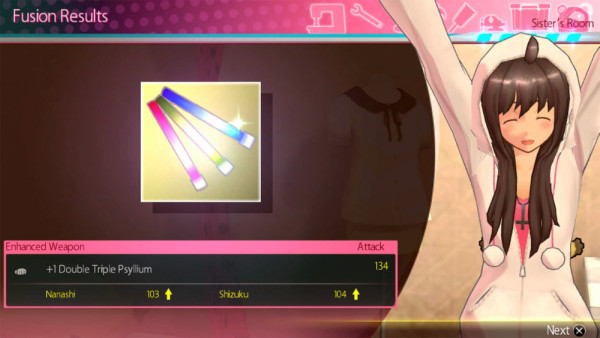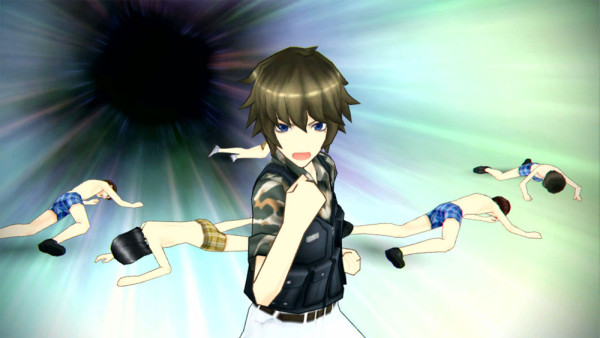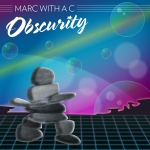Follow me, if you will, into this most bizarre of premises. In Akiba’s Trip: Undead and Undressed you play as Nanashi, a Japanese teenager who is deeply entrenched in otaku culture. He hangs out with a gang of anime and video game fans, and their local hangout is a manga shop in Tokyo. In fact, it’s Nanashi’s love for collecting anime figures that draws him to a shady location for a job prospect. Surprise, surprise, Nanashi! These people don’t want to hire you; they’re vampires, and now they’ve turned you into one as well! Thusly undeaded, our hero very nearly meets his untimely doom at the hands of the very same corporate thugs who vampirised him. Fortunately Shizuku, a young and friendly female vampire, swoops in for the rescue. Freed from the clutches of his captors, Nanashi finds himself in the unenviable position of now having to track down and systematically rid Akihabara of the human-looking monsters that roam its streets and prey on its otaku.
The vampires seem to be connected in some way to a big corporate conspiracy involving a pharmaceutical company, and Nanashi and his friends must get to the bottom of the plot if they hope to save their city. They call the creatures Synthisters, and the creatures feast not on the blood of their victims but on their very social and life energy. That’s what draws the monsters to Akihabara (Akiba for short), at the center of fandom and fashion culture in Tokyo. Just like traditional vampires, these Synthisters are tough fighters, and they’re resistant to just about anything other than direct sunlight. It stands to reason, then, that Nanashi needs to strip all their clothes off in order to kill them. You didn’t misread that. You have to undress the bad guys so that they’ll be fully exposed to the sunlight before they can be killed.
As strange and stereotypically pervy a concept as that sounds, it does make for a fun combat system. Given that Synthisters (and therefore Nanashi as well) can’t be hurt by traditional violence, all the combatants’ health is represented by the condition of their clothes. Characters can wear articles of clothing on their heads, upper bodies, and lower bodies, and as combat proceeds damage is done to each of those garments. Attacks target specific areas, so you can go specifically after damaging a shirt, for example, or you can repeatedly bash away at your enemy’s stylish yet affordable hat. Once a piece of clothing is sufficiently damaged, you can make an attempt to strip it off the enemy. If you’re successful and have done enough damage to other garments on that same bad guy or on other nearby bad guys, button prompts will lead you through a Magic Mike combo routine of tearing clothes away one after the other. Once you’ve fully rid your opponent of clothing (they get to keep their undies), the enemy will blast away in a cloud of purple otaku vampire dust. It’s every bit as weird as it sounds, but it’s actually quite a bit of fun to struggle with characters over their jackets and trousers while you try to make sure your own ensemble stays in one piece.
After you defeat an enemy, there’s a chance that the bad guy will drop loot in the form of their weapon or pieces of clothing you just thrashed off their bodies. You then can equip that gear yourself or use it in ways to enhance the clothes and weapons you already possess. Each piece of clothing and each weapon (ranging from baseball bats to computer monitors) has attack or defense stats, making all this random outfitting stuff into bona fide RPG-ish loot. If you don’t want to use a particular piece of gear you’ve found, you can take it to Nanashi’s reclusive sister, Nana, to turn it into something useful. Nana lives in the back room of the manga shop and is a cosplay aficionado. She can buy unneeded gear from you, or she can fuse items together to increase the stats of other gear you already have. For example, if you’re especially partial to your blue jeans, you can have Nana fuse some other pants into it to increase its defense level. You’ll need to make frequent upgrades to your gear as the enemies gradually become sturdier and swarm you in greater numbers.
Much of the game pairs Nanashi with one of several female sidekicks, with any of whom he can pursue a romance subplot. This isn’t BioWare romance, though. This is more in the vein of a simplified version of the tried and true Japanese dating sim genre. Basically, the more time you spend adventuring with one of the girls, the more she’ll like you. The relationship component of the game feels tacked on and unnecessary, and it likely exists just because it’s something that of course would exist in a game about beating the clothes off anime vampires.
Akiba’s Trip is, on the surface, the most ribald game I have loaded onto my PS4. After playing for a while, though, I found that the game is less about the eyebrow waggling associated with stripping off clothes and more about being a dorky anime fan in Akihabara. There’s no actual nudity in the game, and whenever you do manage to swipe away a character’s underwear, the unmentionable bits are hidden by Sailor Moon-ish flashes of white light. This isn’t exactly a family friendly game, but it’s not something you need to buy while wearing a trench coat and fedora (although aspects of the game might appeal to the fedora crowd, just sayin’). I’ve never been to Japan myself, but I’ve heard from others that the game does a good job of representing Akihabara and its myriad hobby shops and districts. In fact, over 100 real storefronts appear in the game with accurate representations, down to NPC shop promoters handing out digital versions of actual flyers those same real-world stores have given customers. This authenticity is a double edged sword for those among us who speak only English–I hang my head in shame–, because all the store names are displayed in Japanese, and that can make for some confused searching when you’re trying to locate a certain shop as part of a mission.
If you’re in the market for a game that never would be made by a Western developer but that is readily available on Western PlayStations, Akiba’s Trip fits that bill nicely. With its cell shaded anime stylings it’s not the most visually explosive game on the market, but it has enough weird charm and copious content to keep you entertained and busy. The core game takes around 8 to 10 hours to complete, but it’s easy to triple that playtime if you’re a completist and try to collect all the various outfit parts, weapons, and gear.


